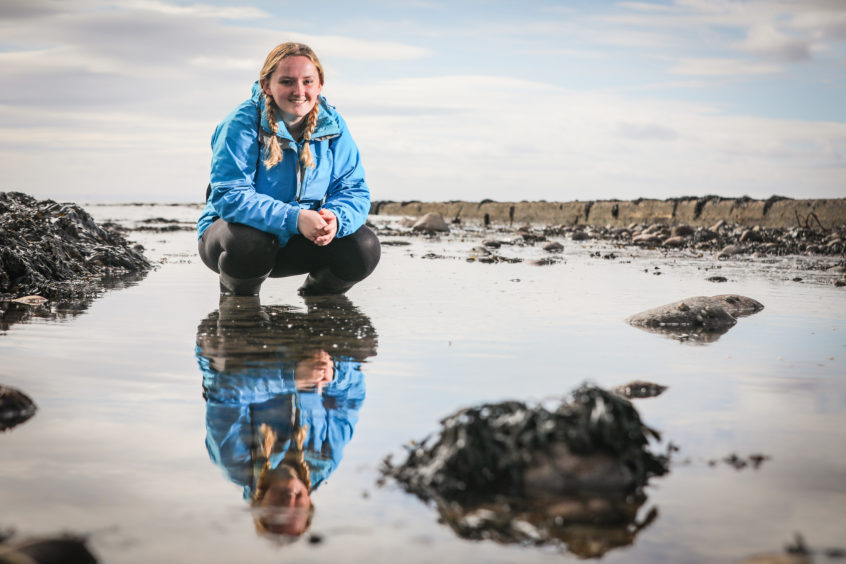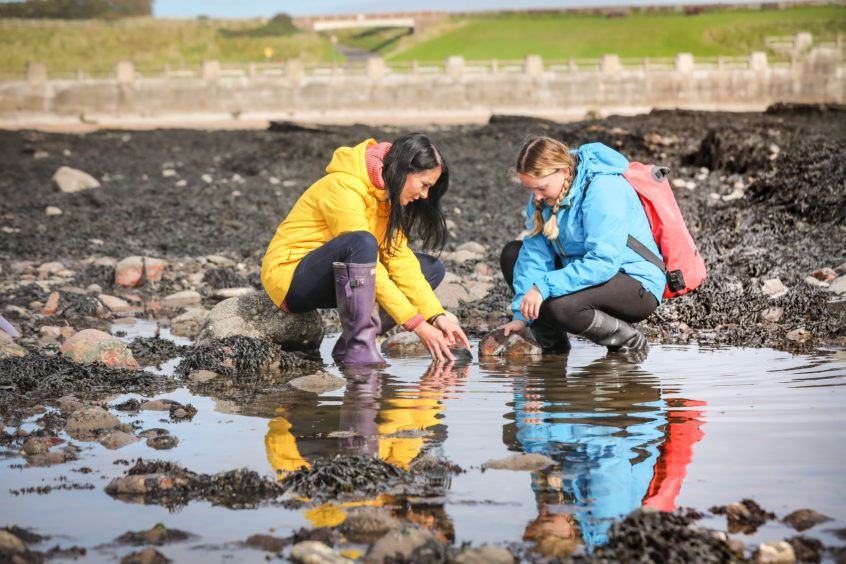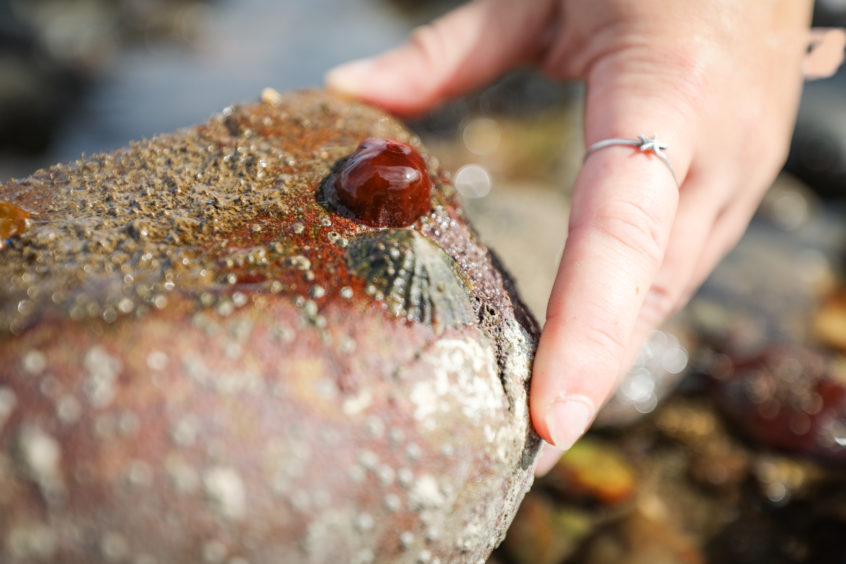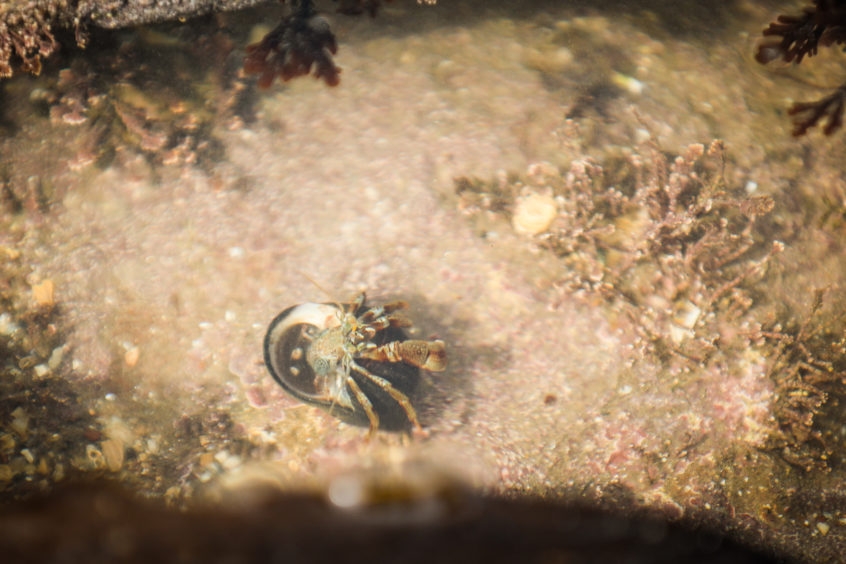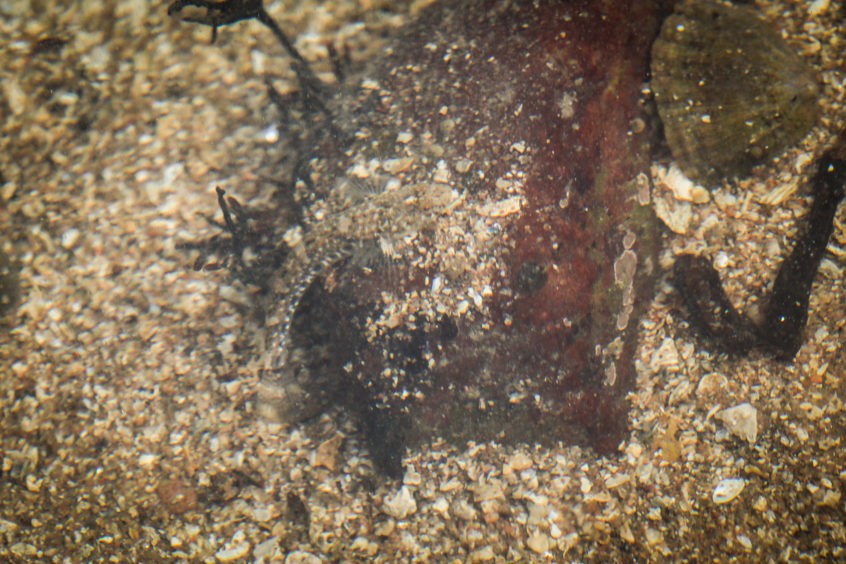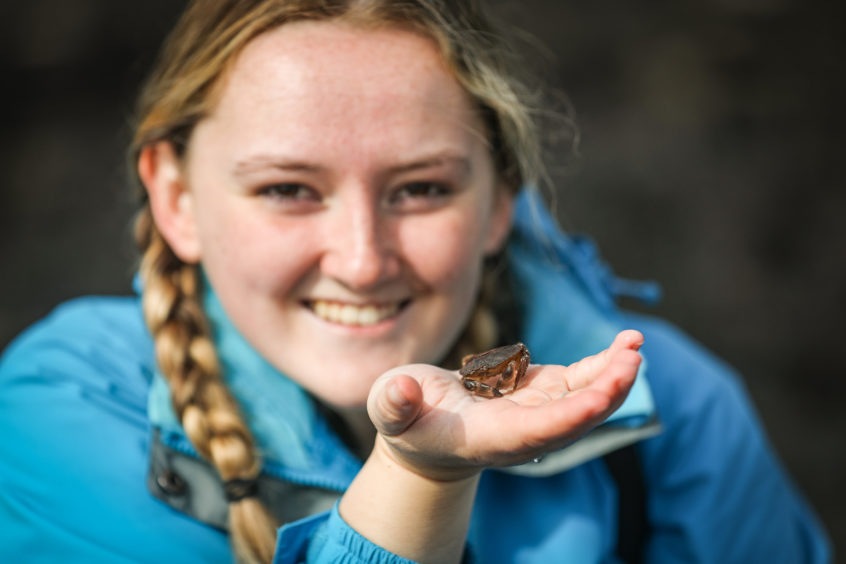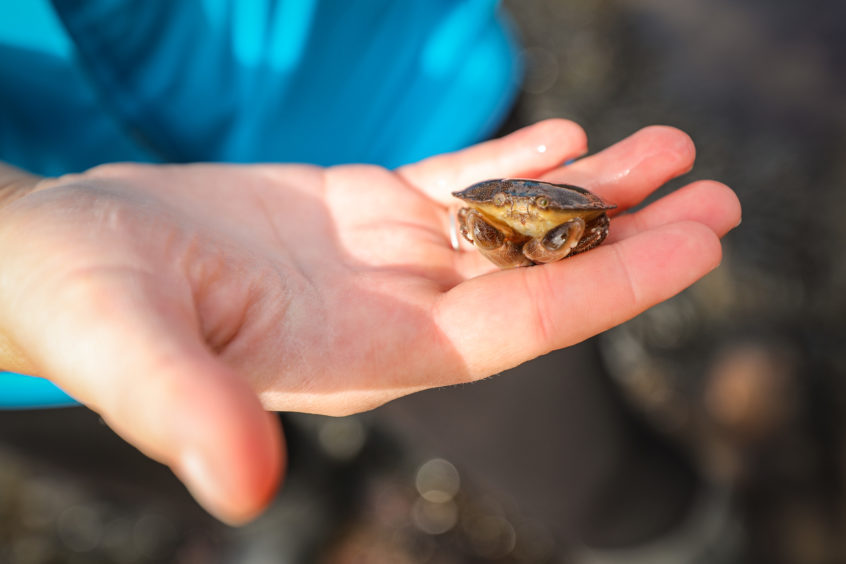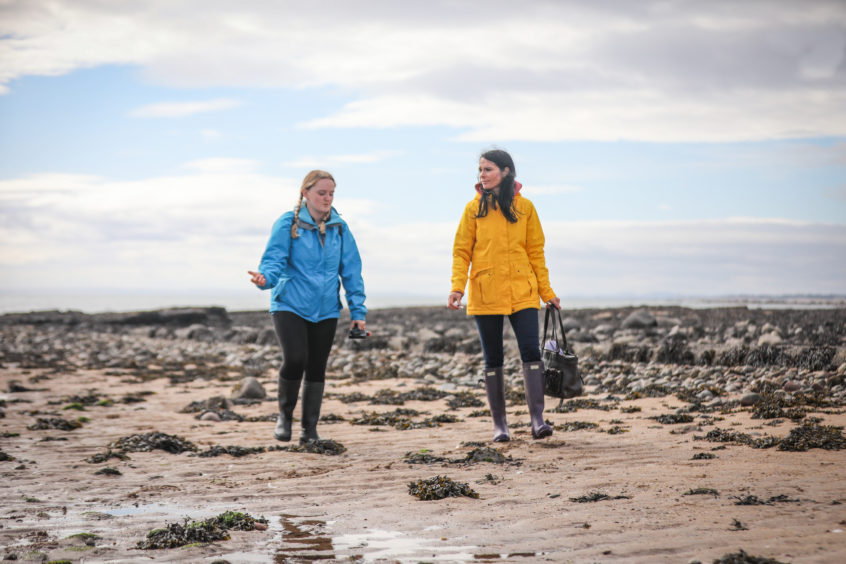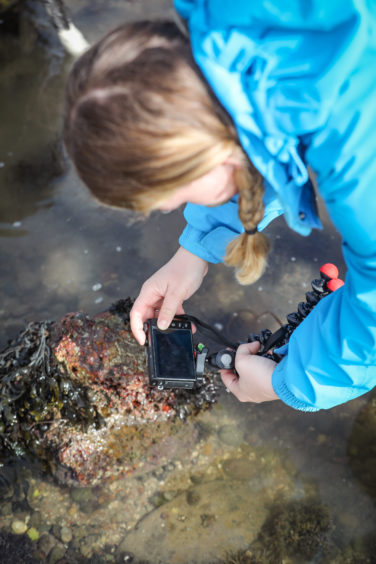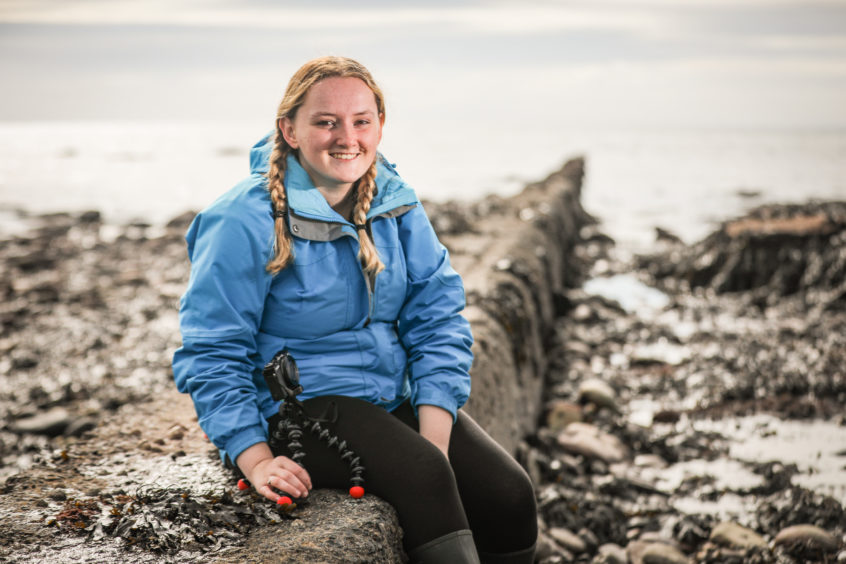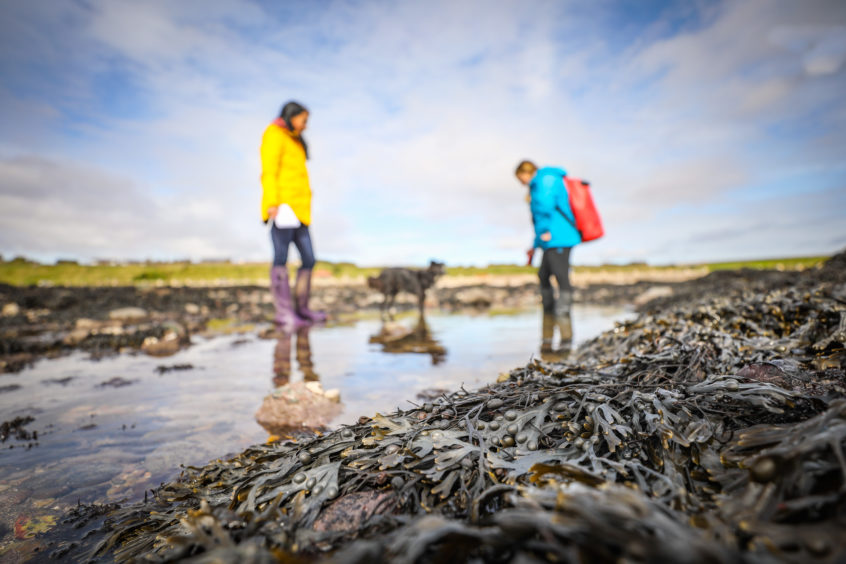Marine researcher and PhD student Elizabeth Mills shares her passion for rockpooling and tips for doing it without getting crabby…
Many of Elizabeth Mills’s mates reckon she’s mad.
“They don’t understand why I would possibly want to spend so much time peering into rocky pools,” says the cheery 24-year-old.
“Personally, I find rockpooling completely addictive. You never know what crazy things you’re going to find.”
As the tide retreats, Elizabeth heads down to the coast to discover the secrets of the sea revealed in glittering rock pools left behind.
It’s here that she glimpses myriad weird and wonderful creatures that inhabit the ocean.
Elizabeth recently launched her own YouTube series exploring marine life in a bid to inspire others to follow in her footsteps.
Under her alias of Marine Mumbles, the PhD civil engineering student at Dundee University films fun, upbeat and educational videos of her discoveries at beaches across the east coast.
Popular haunts include St Andrews, the East Neuk, Stonehaven and Arbroath – which is where she suggests we meet up, a few hours before low tide.
Dressed in wellies and waterproofs, armed with a couple of compact cameras and sporting cute pigtails, Elizabeth is easy to spot.
We head down to the shore, just along from Arbroath Cliffs, and wade out into some shallow, mirror-like pools.
“Rocky coastlines like this cultivate so much life,” she beams. “Every day, the tide retreats, revealing this magical underwater world which just begs to be explored.”
While many of us associate rockpooling with childhood, it’s just as much fun as an adult. It’s also, I discover, an immersive, almost meditative experience – an escape from the eternal cry of mobile phones and social media.
The pace is slow and you need to be patient because creatures aren’t going to come out and say hello on demand!
“I get totally absorbed wandering around peering into rockpools. I can be out on my own for hours and never get bored! ” exclaims Elizabeth, turning over a giant boulder.
“I see some really cool species, like baby lobsters, crabs, shrimps and multicoloured sea slugs, which are actually very pretty. I’m still searching for an octopus, but I’m hopeful I’ll find one every time I go out.”
While Elizabeth is happy to turn over rocks in her search for species, she never takes things away. Instead, she captures them on her underwater camera.
“Oh, look how cute he is!” she exclaims, pointing out a baby hermit crab scuttling for cover.
“They fight for each other’s shells and as they grow, they look for shells that fit them better.
“I once caught a hermit crab hopping from shell to shell on video. That was a special moment.”
Further down the shore, we find a tiny sea anemone, and Elizabeth encourages me to reach out with a finger and touch his tentacles. They feel squishy and harmless, but she tells me they can fire thousands of microscopic “harpoons” at predators. Watch out, fish!
We also find sand worms, edible crabs, limpets, barnacles, common shore crabs, butterfish, chitons (a form of marine mollusc), shrimps, sea squirts, sand gobies and sea sponges, which Elizabeth describes as one of the earliest animal forms.
In terms of tips for rockpooling, Elizabeth advises starting at the edge of the sea and working your way back. You should also look from left to right to ensure you don’t get cut off by incoming tides.
“You can get carried away peering into pools so you do need to keep your wits about you and make sure you can get back to dry land safely,” she says.
“I’d also recommend just standing still and waiting because often, that’s when the best things come out and surprise you.
“There’s so much out there to see. Inspect seaweed to see what creatures live within it.
“Pick up a rock and see if there’s a crab hiding underneath. Just make sure you put things back.
“Do some research before you head out – check out my videos! – and you’ll have a better idea of what you’re looking for.
“All you need is a pair of wellies.”
While Elizabeth’s films are made for fun and educational purposes, they carry a serious environmental message.
“Our rocky shores might not be directly under threat but if we learn to appreciate our oceans, we might start caring about the creatures that inhabit them,” she says.
“The North Sea is a tough environment where creatures are battered by storms, temperature changes and tides.”
Elizabeth’s dream is to discover a new species and name it. “I can dream,” she muses, and why not.
“Every time I go to the coast because I find more amazing life, like lobsters or entire forests of kelp, but even a humble barnacle can be exciting to witness in its natural habitat.
“You can go to any piece of coastline and get hands-on experiences with the creatures and plants that live there and it’s completely mind-blowing.”
Elizabeth’s research at Dundee focuses on biofouling – where marine life accumulates on manmade structures such as harbours.
Having graduated with a degree in marine biology from Swansea University, she came to Dundee’s School of Science and Engineering to learn more about how human and marine life interacts.
“Despite exploring rocky shores as a child, until I did my undergraduate degree I barely knew any of the species on our shores, let alone their awesome life traits, fierce survival strategies and odd habits,” she says.
“My PhD allows me to do the thing I love the most, which is learn about the creatures on our coastlines, and I want to inspire others by sharing that with them. Rockpooling is not only interesting but also a really fun – and free – day out.”
info
Check out Elizabeth’s YouTube films, When The Tide Retreats, and her website, marinemumbles.com
She also draws and paints marine creatures and features videos of her creating this artwork online.
